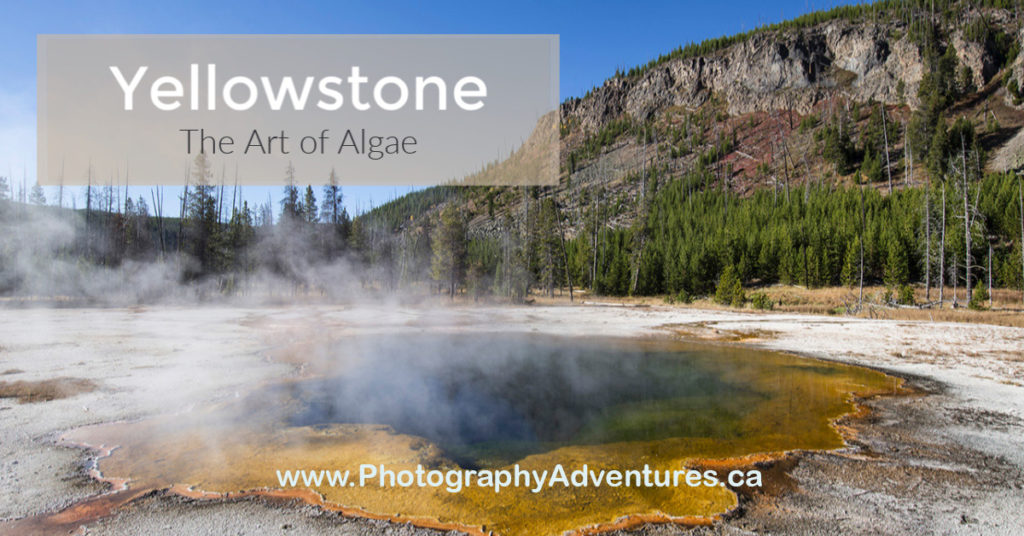
Yellowstone National Park is a geologic wonderland and one of the most unique places on earth. More than a third of Yellowstone Park sits within the caldera of a giant, ancient and still active volcano. I admit, I was having second thoughts just before my feet touched ground in this amazing park. All around the park – steam is being released from the earth and vents shoot boiling water more than 300 feet into the sky. It was quite something to behold. But when you start to look closely at the colourful geothermal springs, you realize that the colourful algae of Yellowstone Park are actually varieties of microbes. Hot Springs originate from the same geothermally heated water as geysers do, but in this case, they do not have a constriction that builds up pressure, so they bubble or flow continuously rather than erupt. Hot springs are the most common type of hydrothermal feature in the park, and they can be found throughout the geyser basins and elsewhere.
Colourful microbes are caused by bacteria and thermophiles: heat-loving algae that contain colorful pigments. Each color of algae is specific to a particular temperature range radiating from the center of the hot spring. So, this was a photographer’s paradise for capturing some of the most unique landscapes in the world. We stayed at the Old Faithful Inn, right in Yellowstone – this is the place to be. The Old House Inn provides some charming basic rooms with two or three queen beds and a vanity sink. You don’t want to be driving 1 hour to get to the sunrise locations in the morning. Let’s take a walk through the park and explore.

Biscuit Basin
The first stop takes us to Biscuit Basin Loop which offers a 2/3 of a mile lollipop-loop hike in Yellowstone National Park’s Upper Geyser Basin and there are plenty of hydrothermal features to explore. The steaming springs are surrounded by mellow reflective pools that send rippling runoff water over vibrant orange bacterial mats. Here’s some examples. All photos were taken with my Canon EOS 6D full frame camera, using either a Canon EF 11-24mm f/4L USM, EF 70- 200mm f/4L or my trusty EF 24-105MM F4L II USM lens.
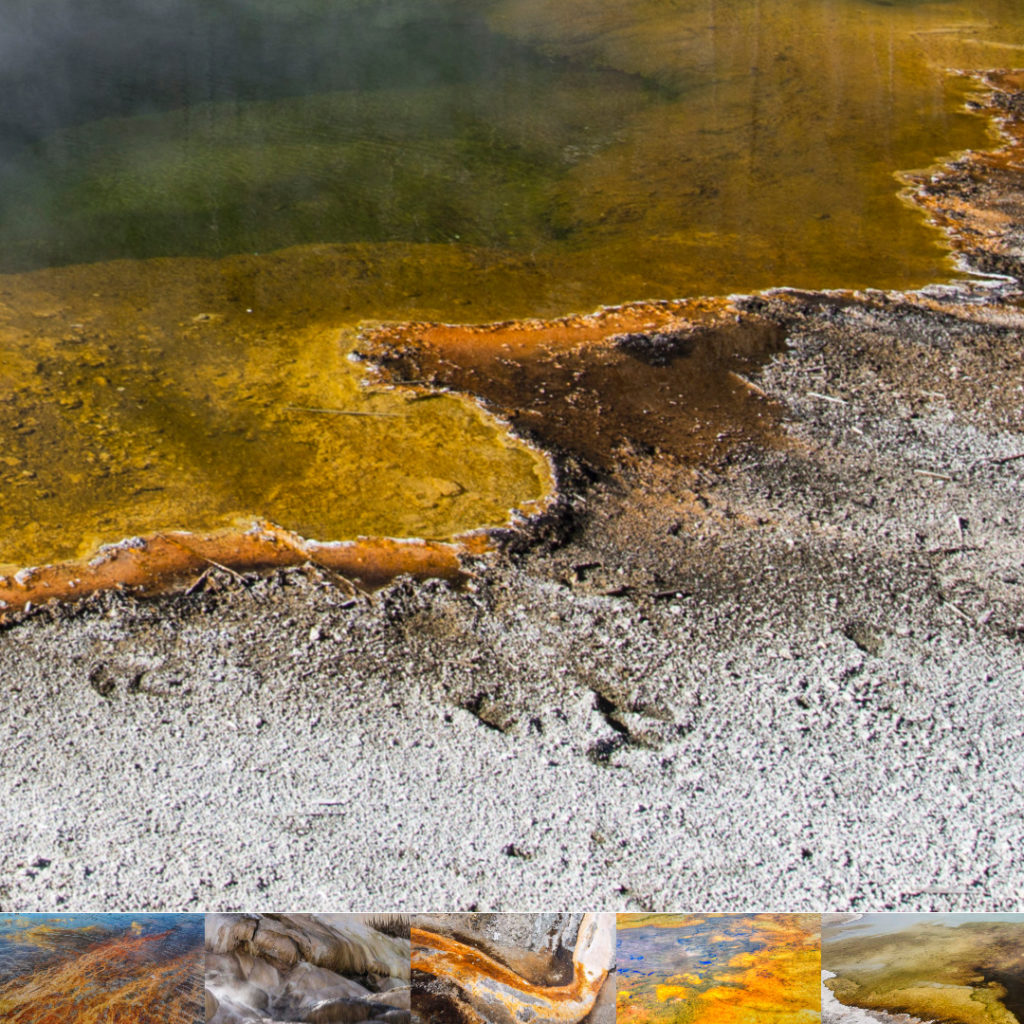
Black Sand Basin
Just north of Old Faithful inn, we went to explore Black Sand Basin, one of Yellowstone’s most colorful basins that boasts a small isolated collection of geysers and hot springs. There you will find a small collection of jewel-like geysers, and colorful hot springs. Emerald Pool is the most colorful and famous of these springs. It is a deep emerald green fringed by an outer ring of yellow and orange. This was definitely one of my favorites. Temperatures of the pool run around 154.6°F, so stay well back of the pool. The colors of the pool are the result of lower temperatures which have allowed yellow bacteria and algae to grow on the outside of the pool. The clear water of the pool reflects the blues but absorbs the other hues of the color spectrum. The combination of blue and yellow then produces green. Spectacular!
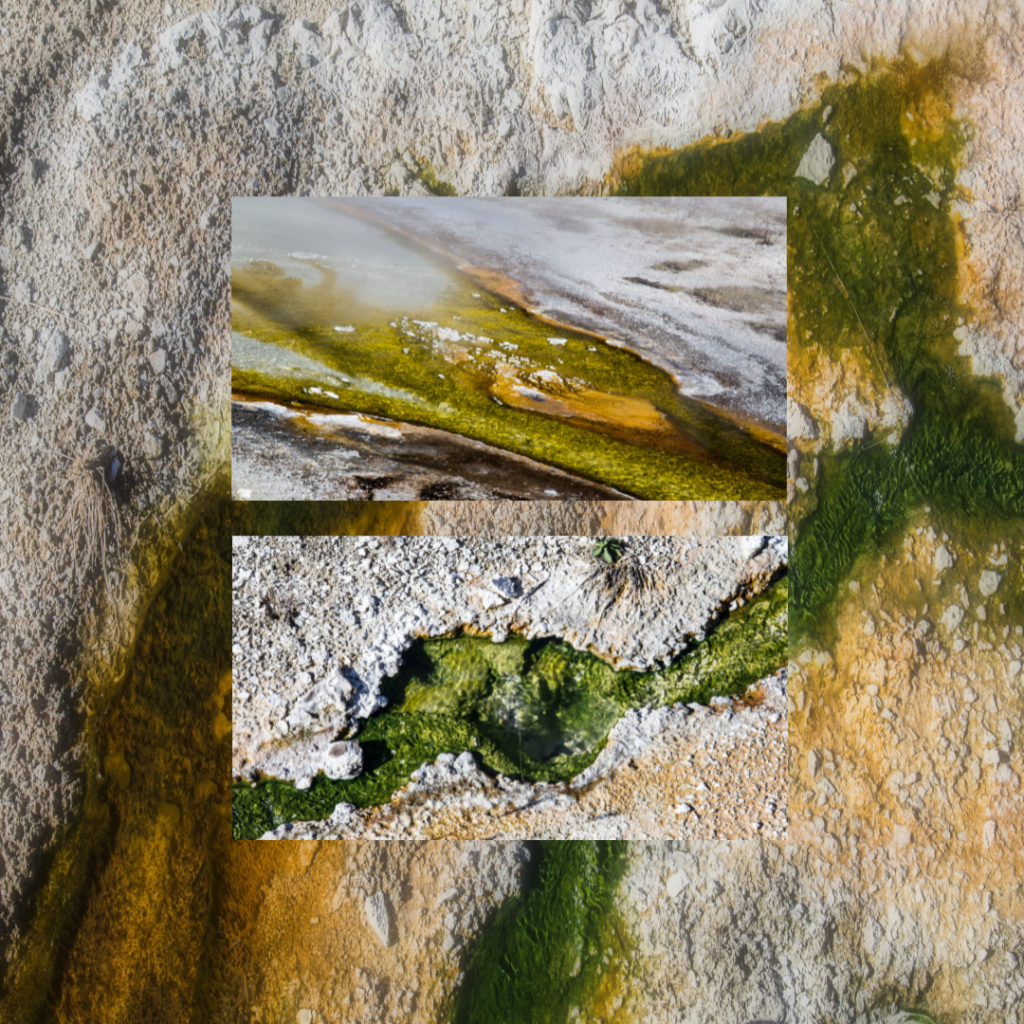
West Thumb Geyser Basin
West Thumb Geyser Basin is the largest geyser basin on the shores of Yellowstone Lake. A well-maintained boardwalk provides easy access to all the geothermal features and is a great place to walk around and explore. West Thumb has the least amount of geyser activity compared to the other basins. But West Thumb, for its size, has it all-hot springs, pools, mud pots, fumaroles and lake shore geysers which make it so interesting. Since the mid 1970s, West Thumb has decreased in thermal activity. Some temperatures have cooled in the basin allowing large colonies of algae and cyanobacteria to grow. As a result, large newly-formed microbial mats flourish on the run-off channels and along the edges of pools. Here’s an example.
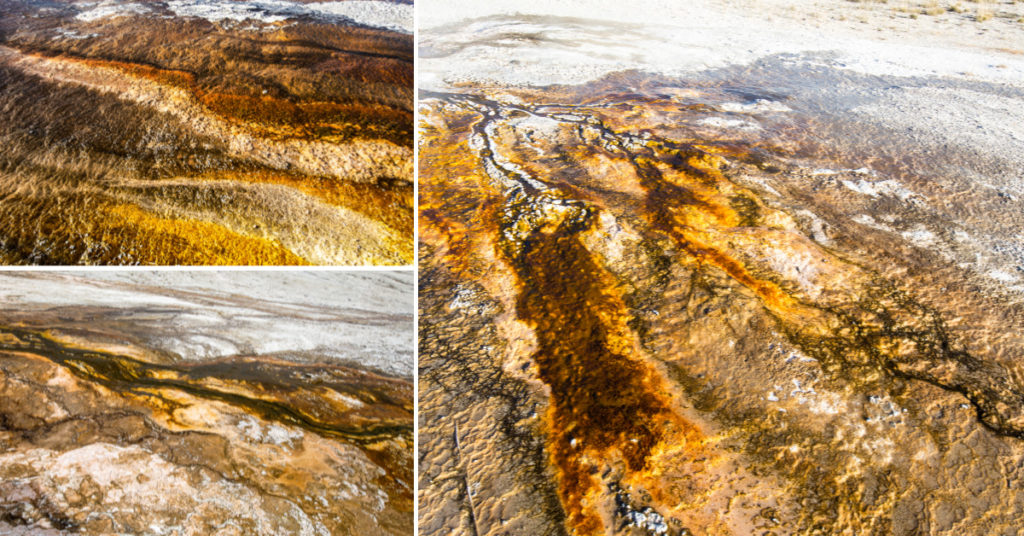
Old Faithful
Being part of Midway Geyser Basin, you can walk from the Old Faithful Inn and see lots of Hydrothermal features along Fairy Falls Trail. Morning Glory Geyser is a 2.8 mile round-trip from the Visitor Center. Literally, if you are short on time and here for only a few days, there’s lots to see right around Old Faithful Inn. Morning Glory Geyser has to be one of my favorites. You’ll see a beautiful waterfall, many hydrothermal features, and a variety of birds and flowers. Discover the unique hikes around the largest concentration of hydrothermal features in the world as you hike along this trail.
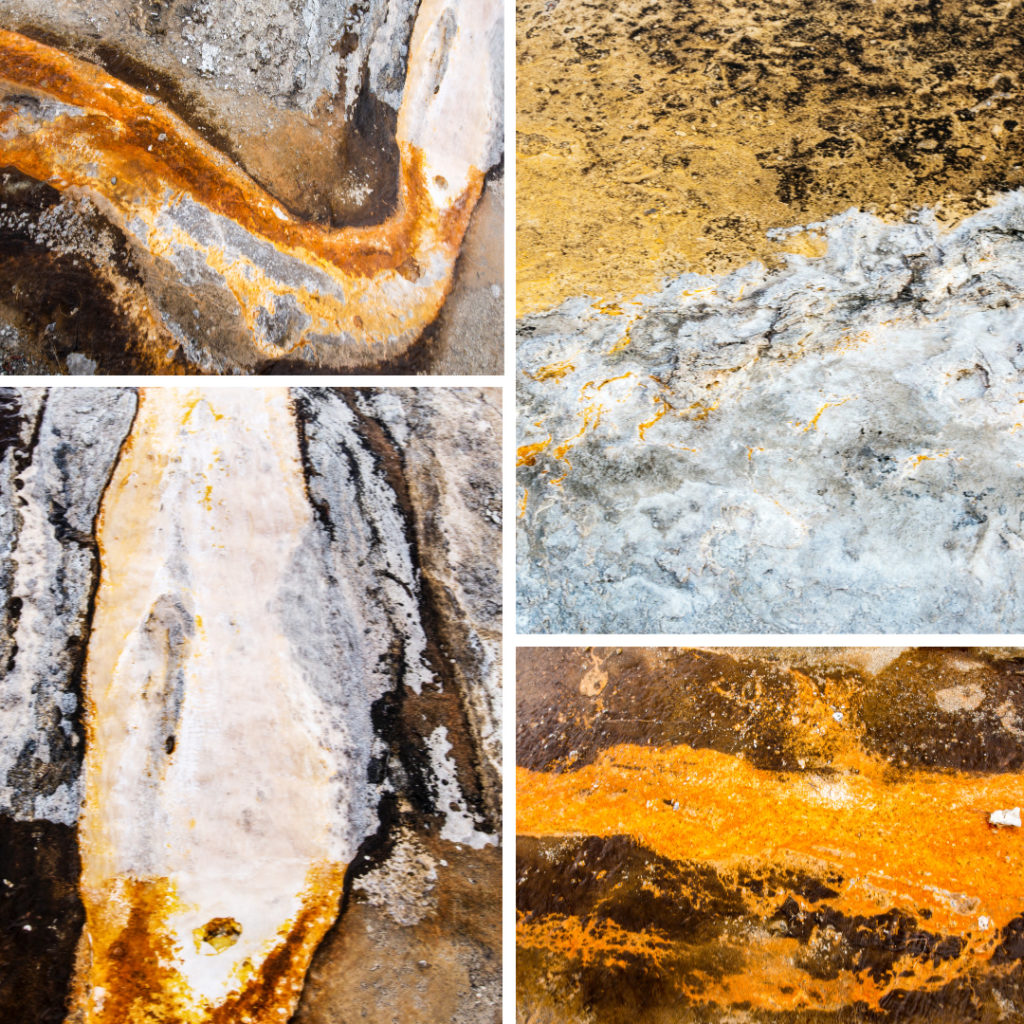
Firehole Lake Drive
Located in the Lower Geyser Basin area near Fountain Paint Pot, Firehole Lake Drive is a 5.5 km one-way road that runs from south to north. This small road proved to be very interesting because it took us to different geothermal features. It is located in between two other thermal areas, with the Fountain Paint Pots to the north and the Midway Geyser Basin to the south. This side road travels through an active thermal area with normally high ground temperatures, so high that in 2014 the road was closed temporarily because the ground under it got too hot, and melted the asphalt. The one-way Firehole Lake Drive takes you through the woods and back to a place where hidden geysers and thermal features that can’t be seen from the road, are found. The photos were stunning and make for great images stretched on canvas and hung on the wall.
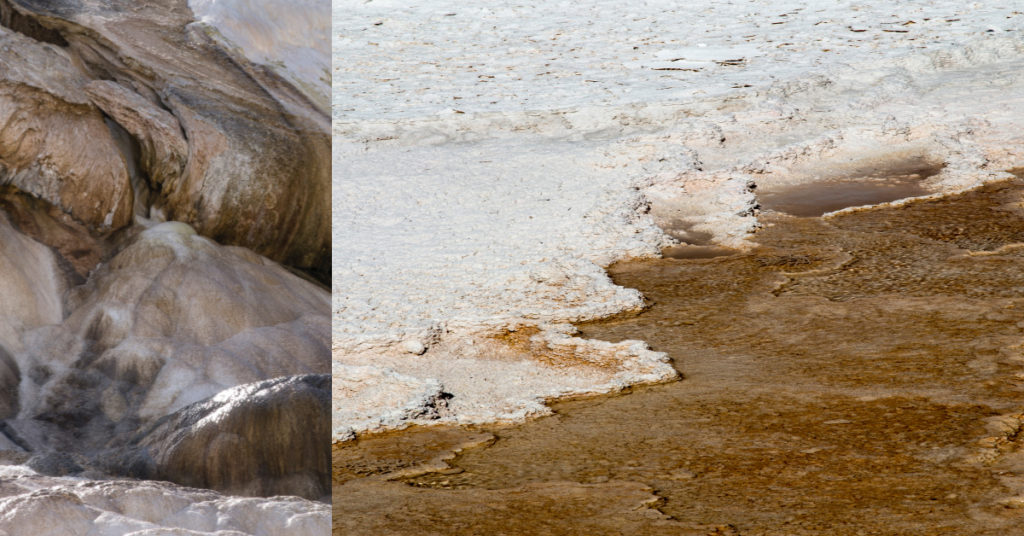
Mammoth Hot Springs
Mammoth Hot Springs is a large complex of hot springs on a hill of travertine in Yellowstone. It was created over thousands of years as hot water from the spring cooled and deposited calcium carbonate. Although these springs lie outside the caldera boundary, their energy has been attributed to the same magmatic system that fuels other Yellowstone geothermal areas. There are some great spots to explore. You can access the lower boardwalk from the parking lot or the Grand Loop Road. You can access the upper boardwalk from the one-way Upper Terrace Drive and parking lot. The road winds among springs for 1.5 miles before it loops back for a half mile. The Upper Terraces include Prospect Terrace, New Highland Terrace, Orange Spring Mound, Bath Lake, White Elephant Back Terrace and Angel Terrace.
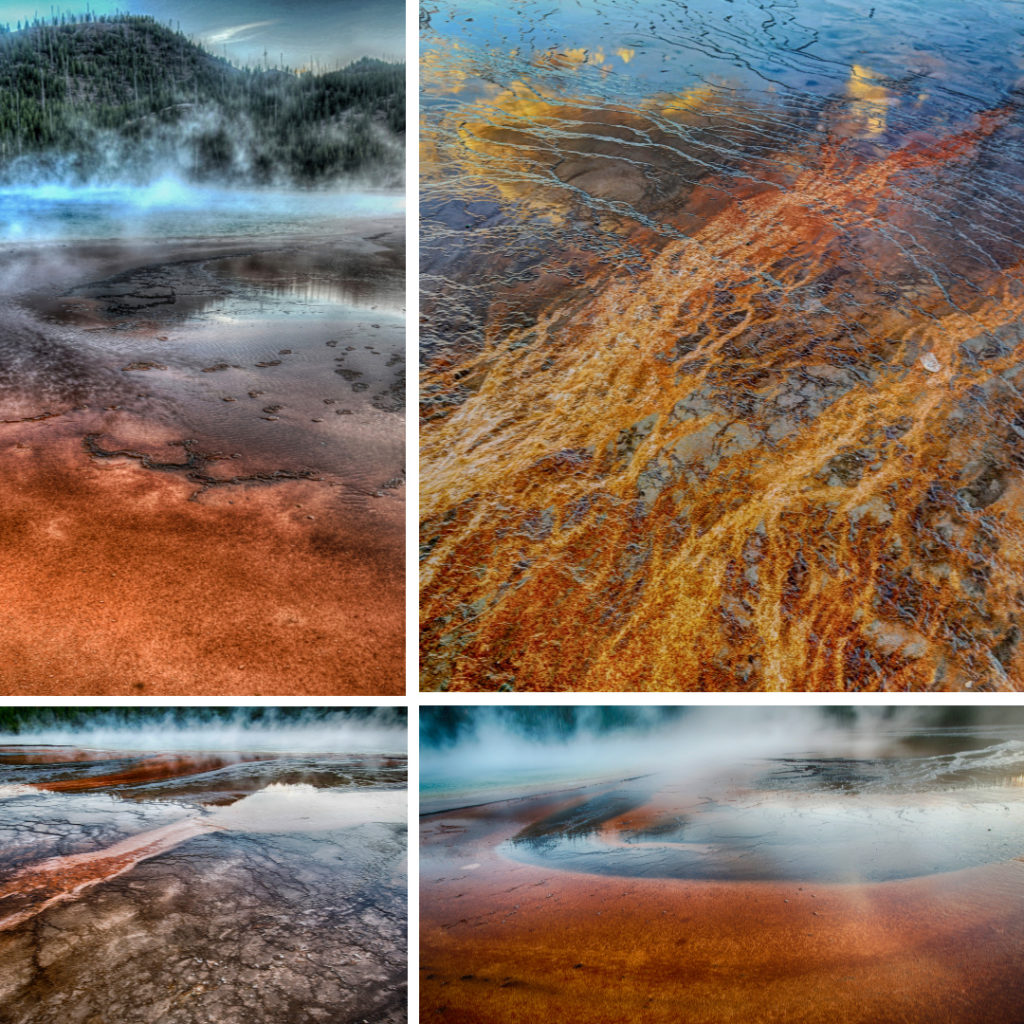
Midway Geyser Basin
The Midway Geyser Basin hosts two of the largest thermal features of their types found anywhere in the world. The famous Grand Prismatic spring is a huge hot spring with the most amazing colors and Excelsior Geyser is one of the largest geysers. The largest hot spring in all of North America is the Grand Prismatic spring and the Midway Geyser Basin has a collection of some of the most gorgeous varieties of colorful microbes anywhere. This photo was taken shooting down on the watery surface of the Grand Prismatic – that’s why you can see the reflections of the sky in the photo. At almost 370 feet in diameter, the Grand Prismatic Spring shows off a rainbow of colors and steam that is hard to forget. You can follow a nicely maintained boardwalk around the spring, but be careful not to step off the boardwalk.

